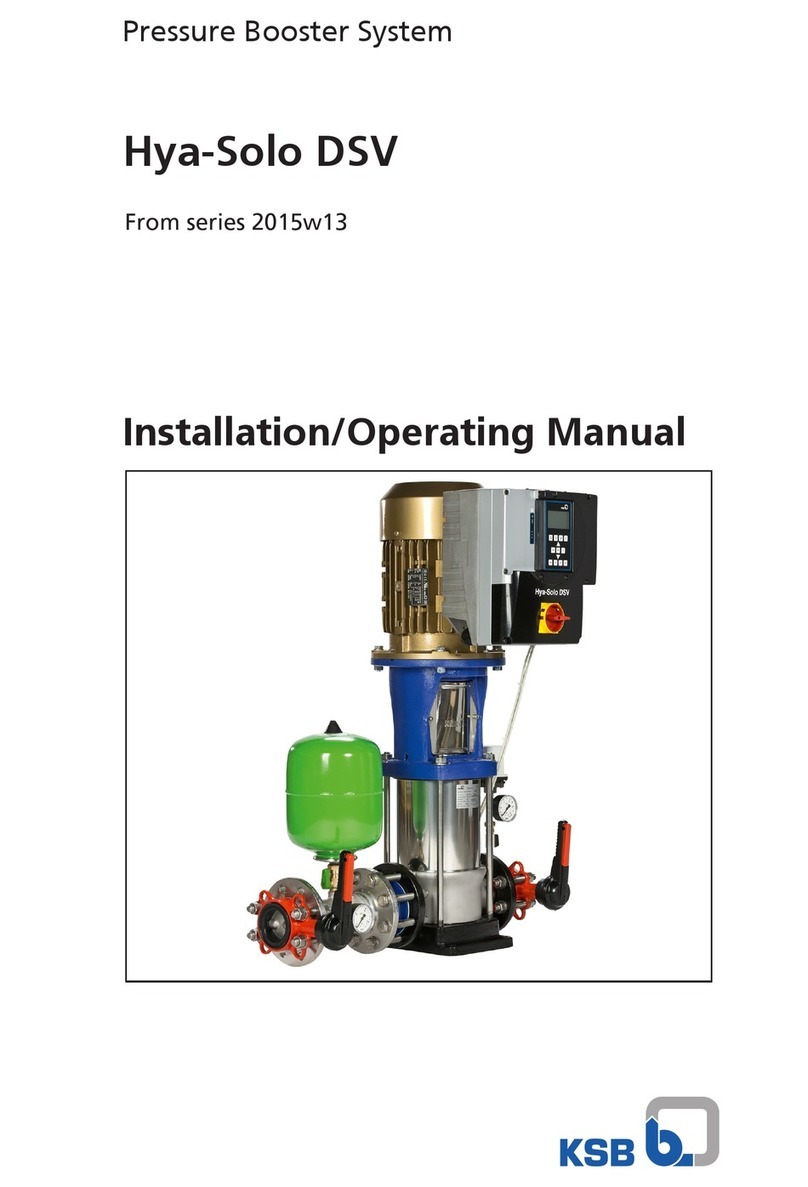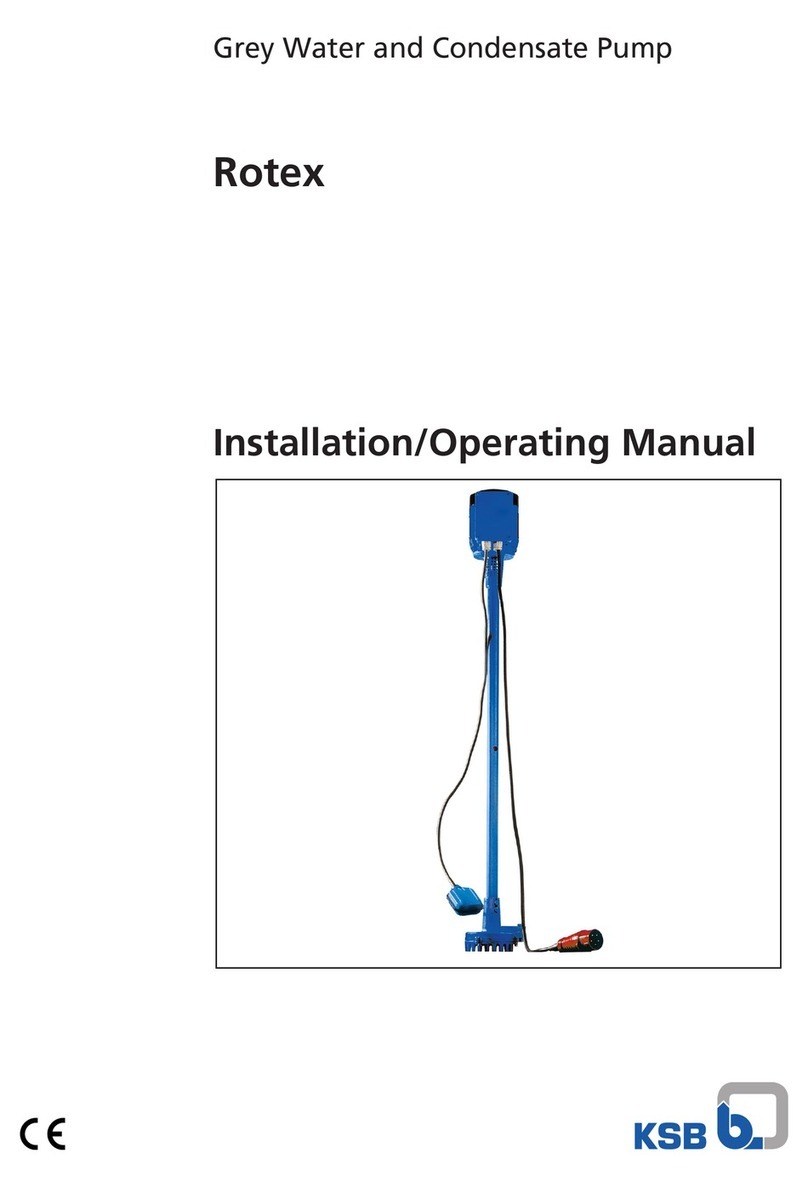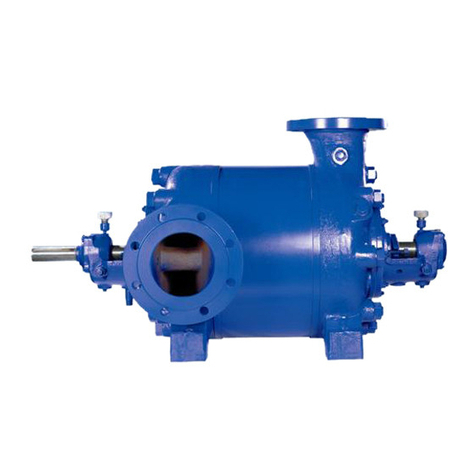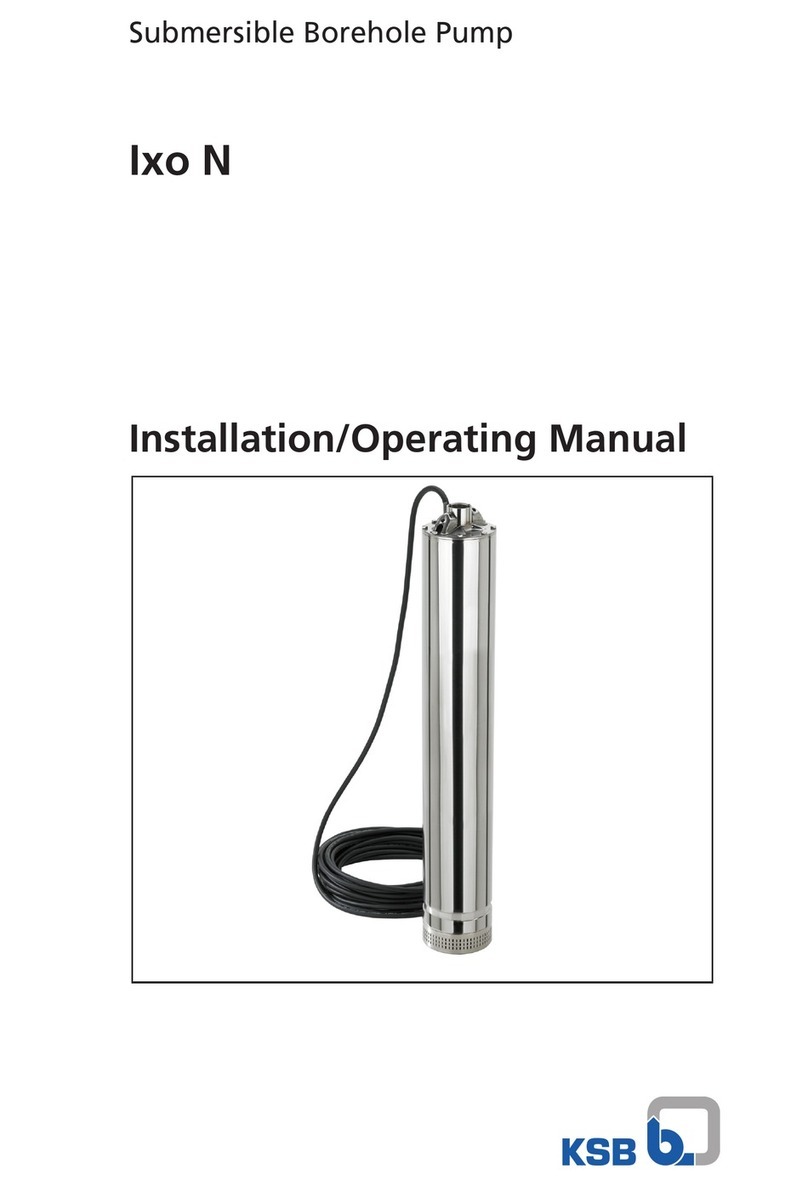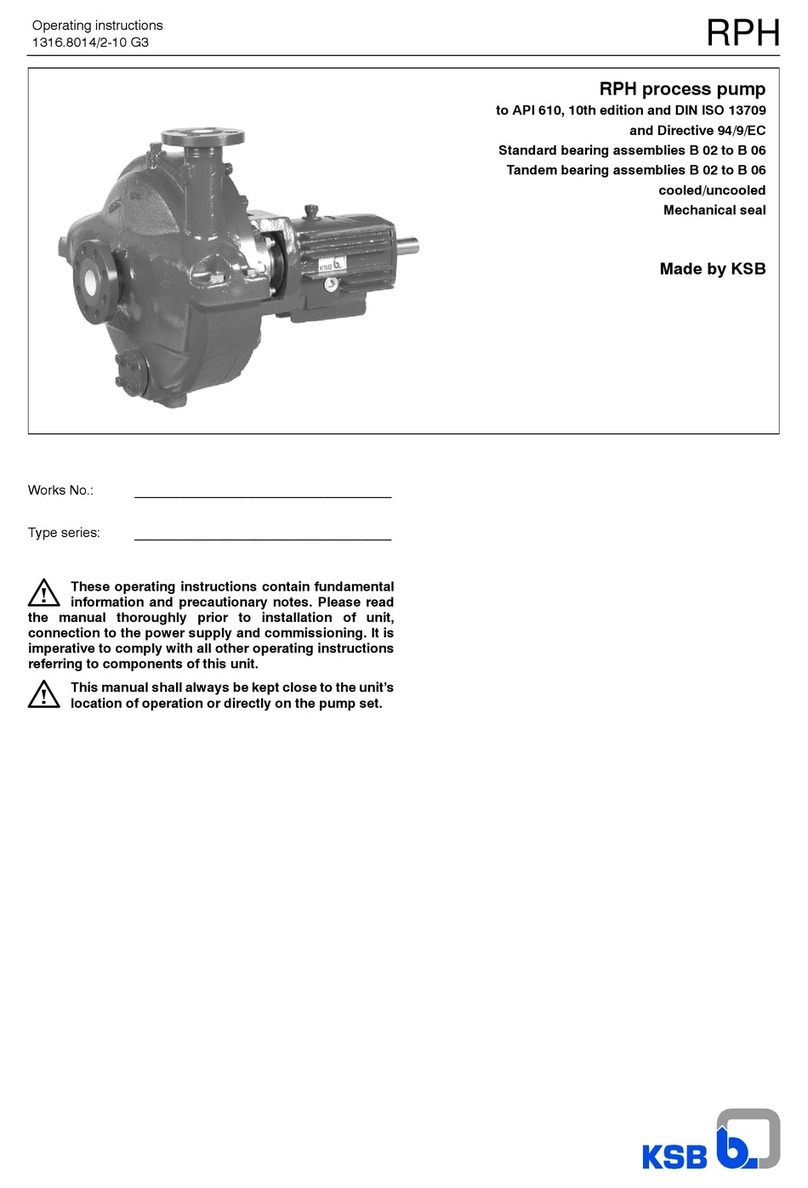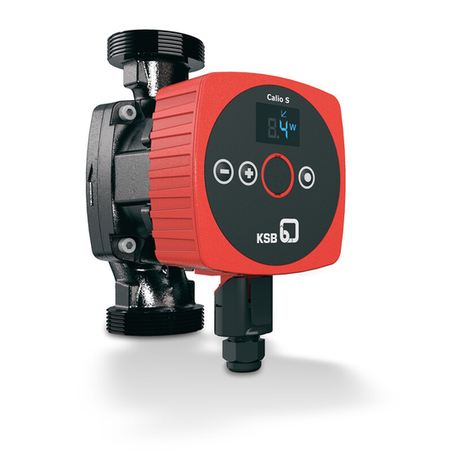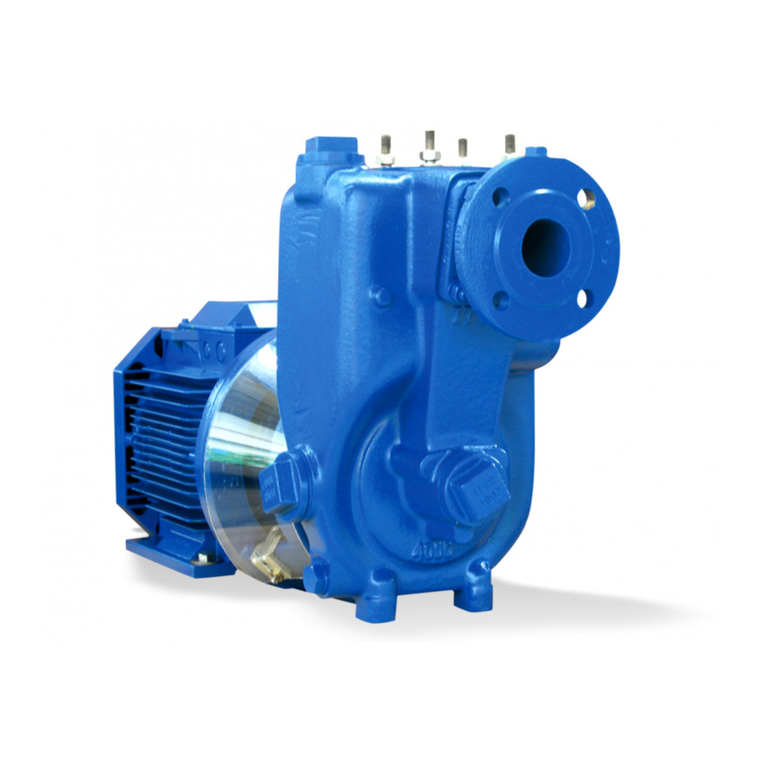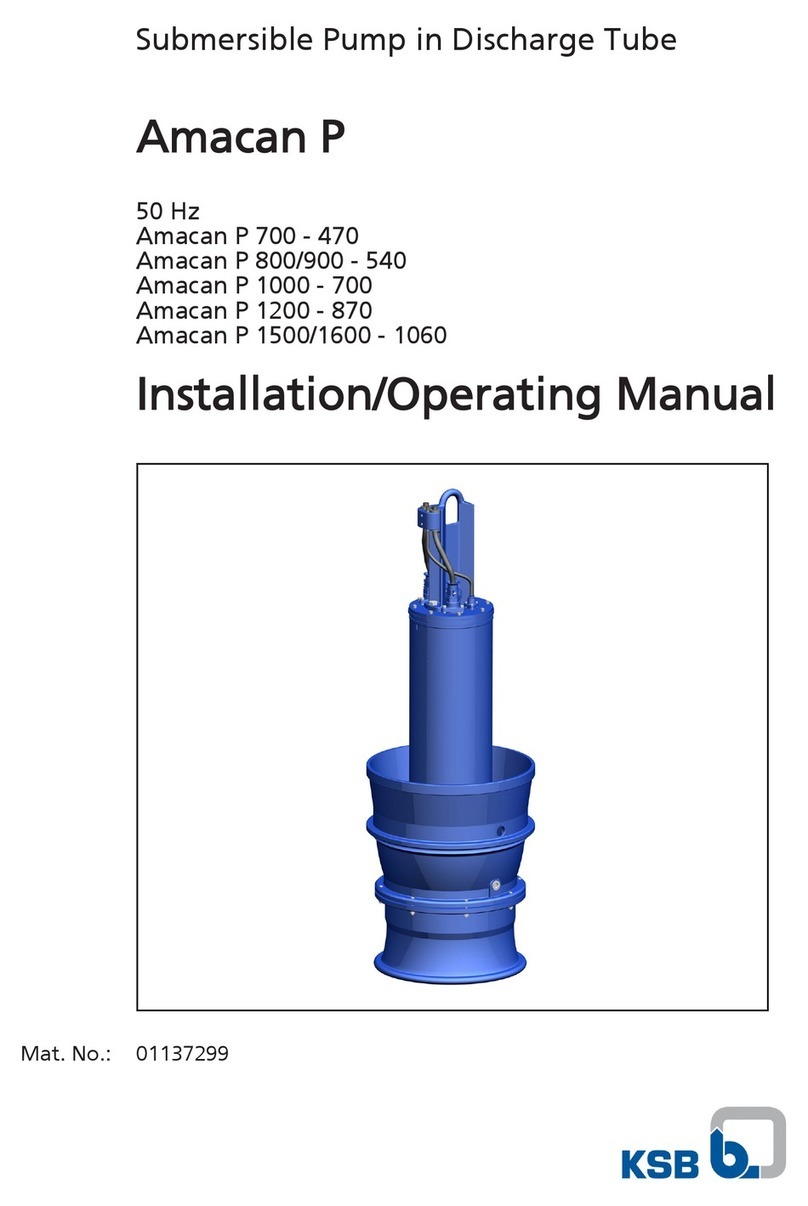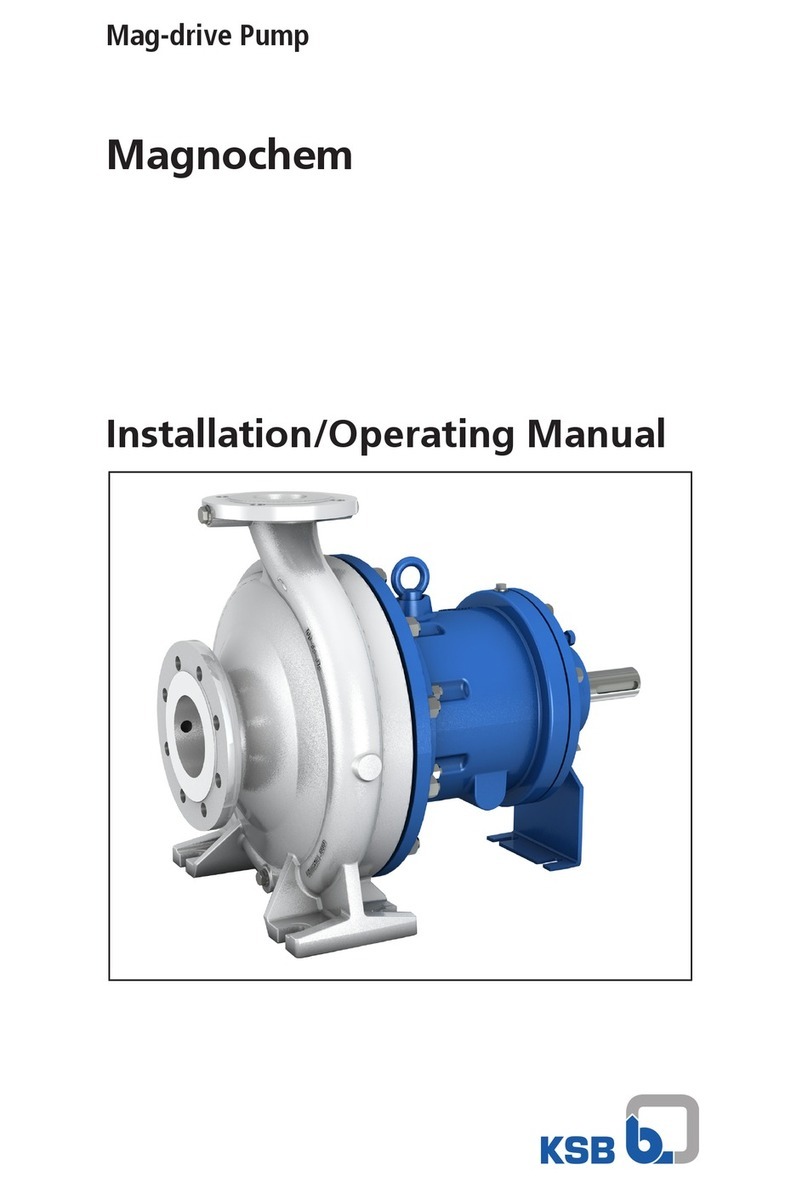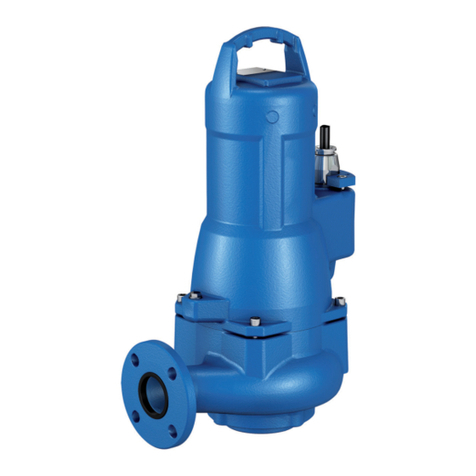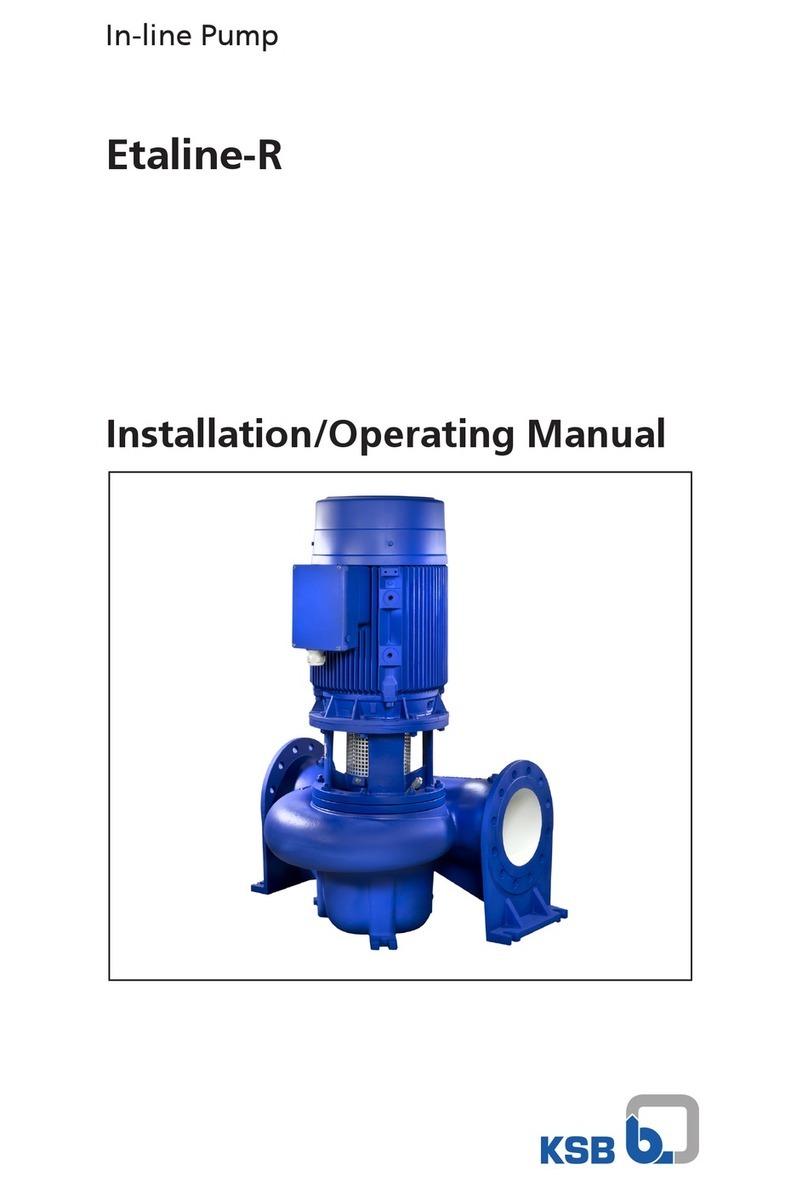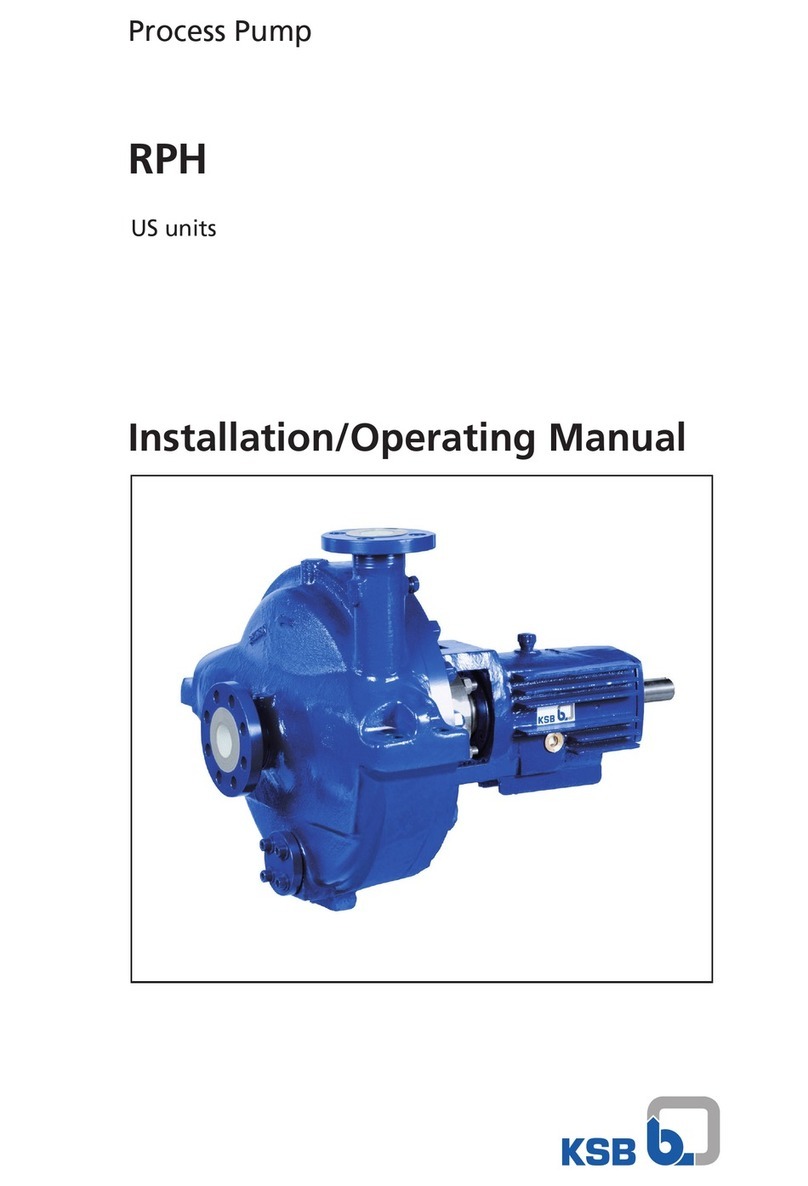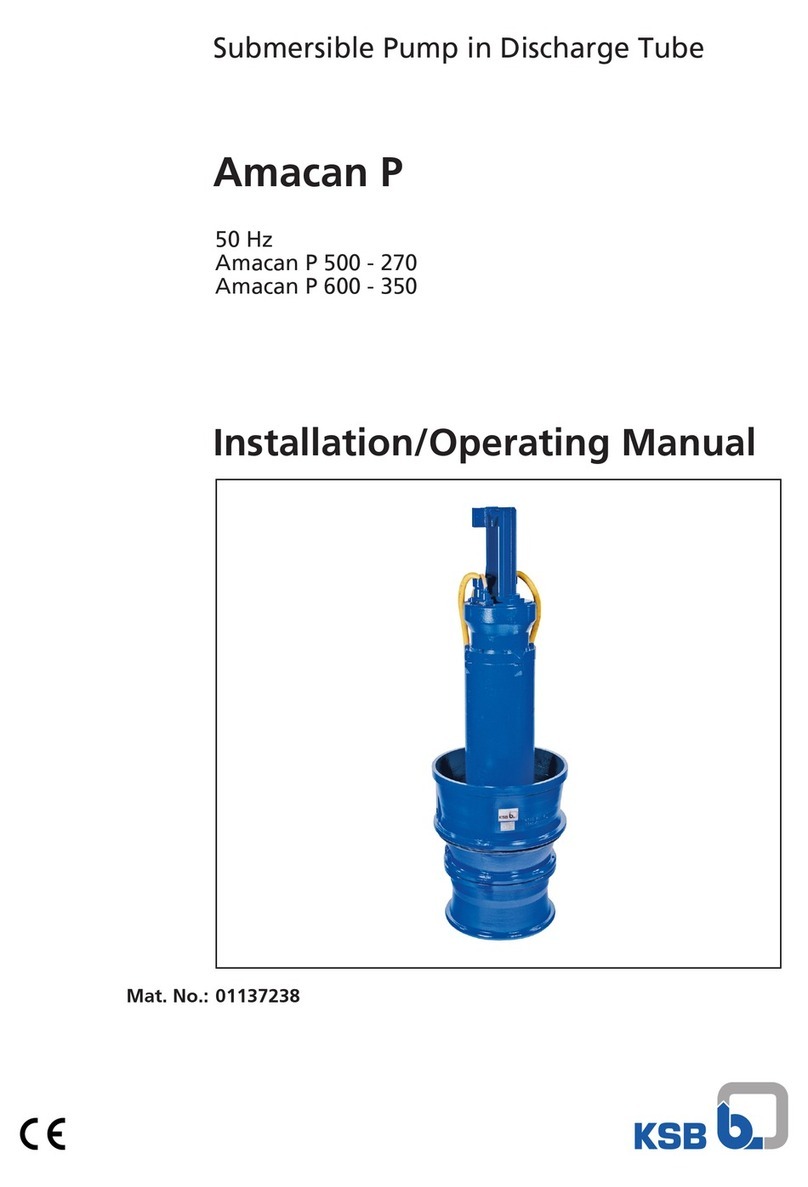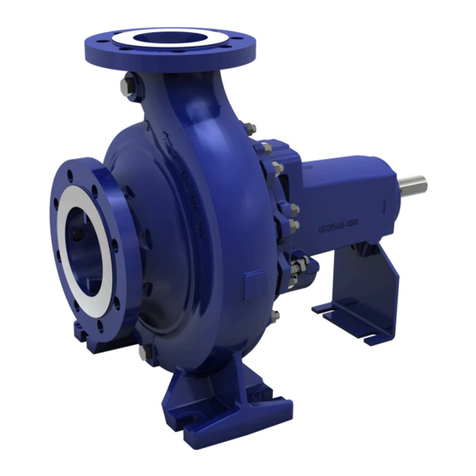
LCC
5
1 General
This manual contains important information
for reliable, proper and efficient operation.
Compliance with the operating instructions is of vital
importance to ensure reliability and long service life of the
pump, and to avoid any risks.
These operating instructions do not take into account local
regulations; the operator must ensure that such regulations
are strictly observed by all, including the personnel called in
for installation.
This pump / unit must not be operated beyond the
limit values specified in the technical documentation
for the medium handled, capacity, speed, density, pressure,
temperature and motor rating. Make sure that operation is in
accordance with the instructions given in this manual or in
the contract documentation.
The nameplate indicates the type series / size, main
operating data and serial number; please quote this
information in all queries, repeat orders and particularly
when ordering spare parts.
If you need any additional information or instructions
exceeding the scope of this manual or in case of damage
please contact your GIW / KSB representative.
2 Safety
These operating instructions contain fundamental
information that must be complied with during installation,
operation and maintenance. Therefore this operating
manual must be read and understood both by the installing
personnel and the responsible trained personnel / operators
prior to installation and commissioning, and it must always
be kept close to the operating location of the machine / unit
for easy access.
Not only must the general safety instructions given in this
chapter of “Safety” be complied with, but also the safety
instructions outlined under specific headings.
2.1 Marking of Instructions in the Manual
The safety instructions contained in this manual whose non-
observance might cause hazards to persons are specially
marked with the general hazard sign, namely
safety sign in accordance with DIN 4844-W9.
The electrical danger warning sign is
safety sign in accordance with DIN 4844-W8.
The word
Caution
is to introduce safety instructions whose non-observance
may lead to damage to the machine and its functions.
Instructions attached directly to the machine, such as:
xArrow indicating the direction of rotation
xMarking for fluid connections
must always be complied with and be kept in legible
condition at all times.
2.2 Personnel Qualification and Training
All personnel involved in the operation, maintenance,
inspection and installation of the machine must be fully
qualified to carry out the work involved.
Personnel responsibilities, competence and supervision
must be clearly defined by the operator. If the personnel in
question are not already in possession of the requisite know-
how, appropriate training and instruction must be provided.
If required, the operator may commission the manufacturer /
supplier to provide such training. In addition, the operator is
responsible for ensuring that the contents of the operating
instructions are fully understood by the responsible
personnel.
2.3 Non-compliance with Safety Instructions
Non-compliance with safety instructions can jeopardize the
safety of personnel, the environment and the machine itself.
Non-compliance with these safety instructions will also lead
to forfeiture of any and all rights to claims for damages.
In particular, non-compliance can, for example, result in:
xFailure of important machine / unit functions
xFailure of prescribed maintenance and servicing
practices
xHazard to persons by electrical, mechanical and
chemical effects
xHazard to the environment due to leakage of hazardous
substances.
2.4 Safety Awareness
It is imperative to comply with the safety instructions
contained in this manual, the relevant national and local
health and safety regulations and the operator’s own internal
work, operation and safety regulations.
2.5 Safety Instructions for the Operator / User
xAny hot or cold components that could pose a hazard
must be equipped with a guard by the operator.
xGuards that are fitted to prevent accidental contact with
moving parts (e.g. coupling) must not be removed while
the machine is operating.
xLeakages (e.g. at the shaft seal) of hazardous media
handled (e.g. explosive, toxic, hot) must be contained so
as to avoid any danger to persons and the environment.
Pertinent legal provisions must be adhered to.
xElectrical hazards must be eliminated. (Refer to the
relevant safety regulations applicable to different
countries and / or the local energy supply companies.)
2.6 Safety Instructions for Maintenance, Inspection
and Installation
The operator is responsible for ensuring that all
maintenance, inspection and installation work is performed
by authorized and qualified personnel who are thoroughly
familiar with the manual.
